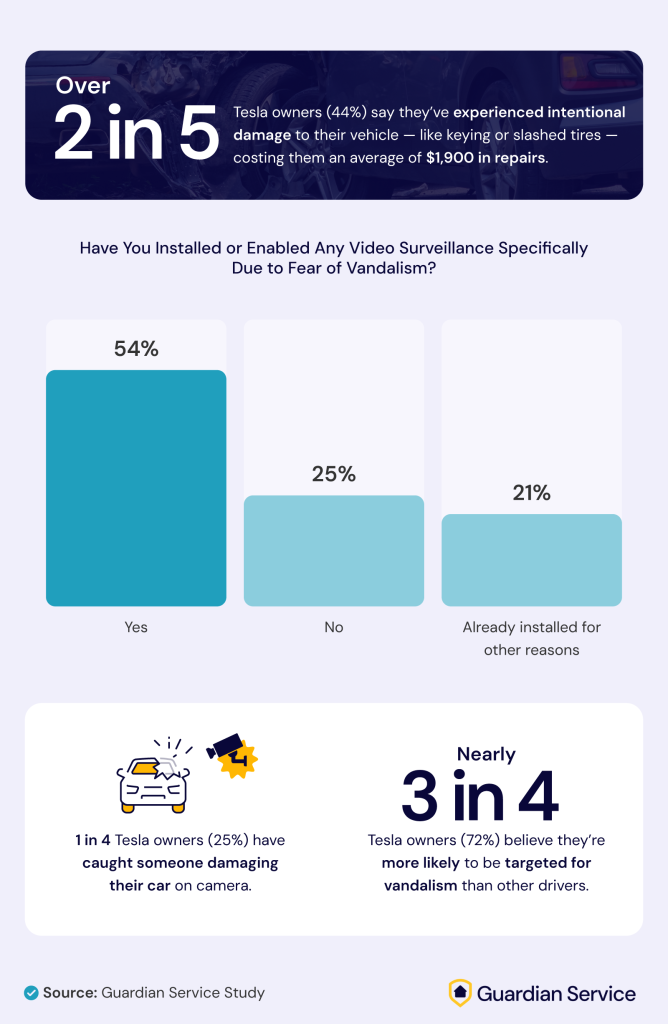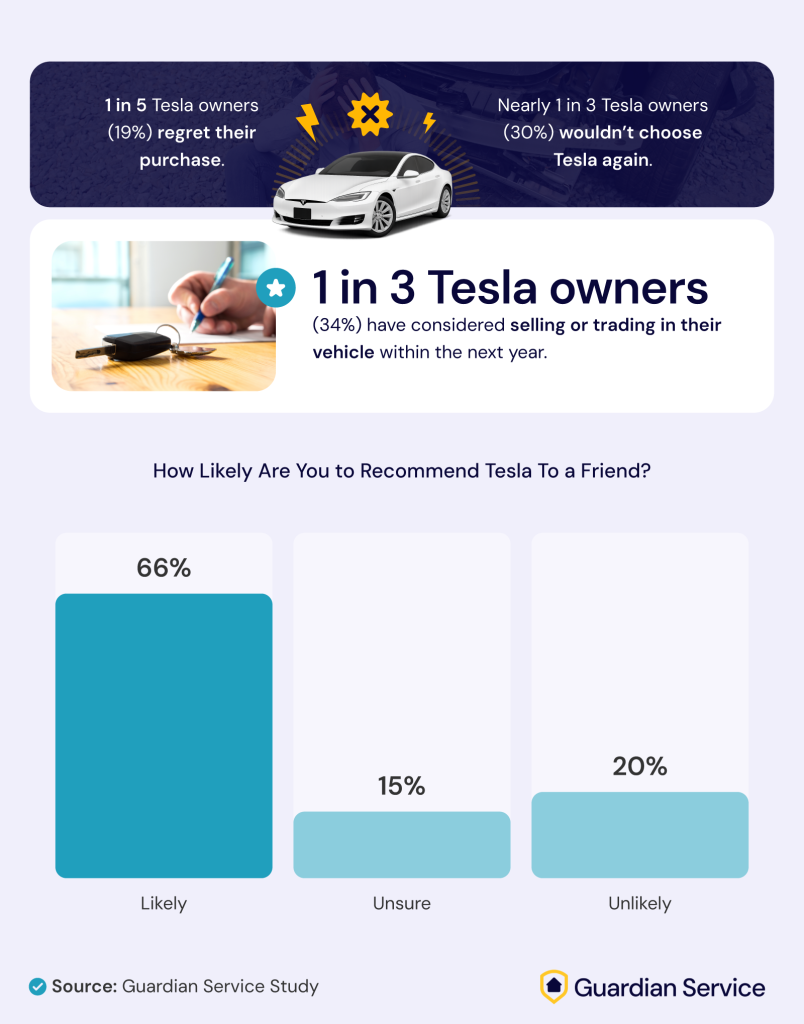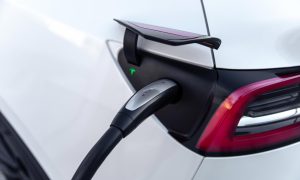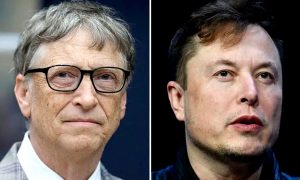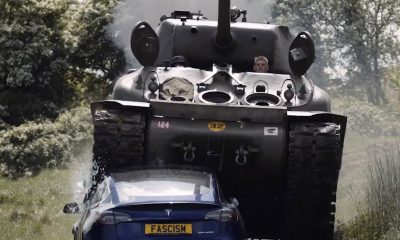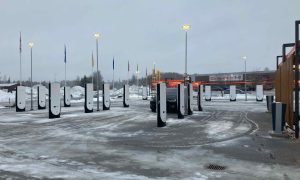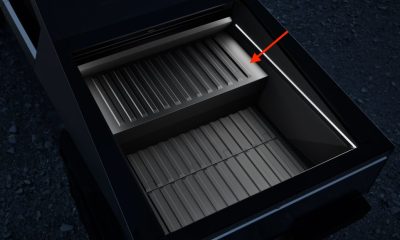News
Over 2 in 5 Tesla owners experienced intentional damage to their vehicle: study
The majority of Tesla owners who participated in the study were still willing to recommend the company’s vehicles to their friends.
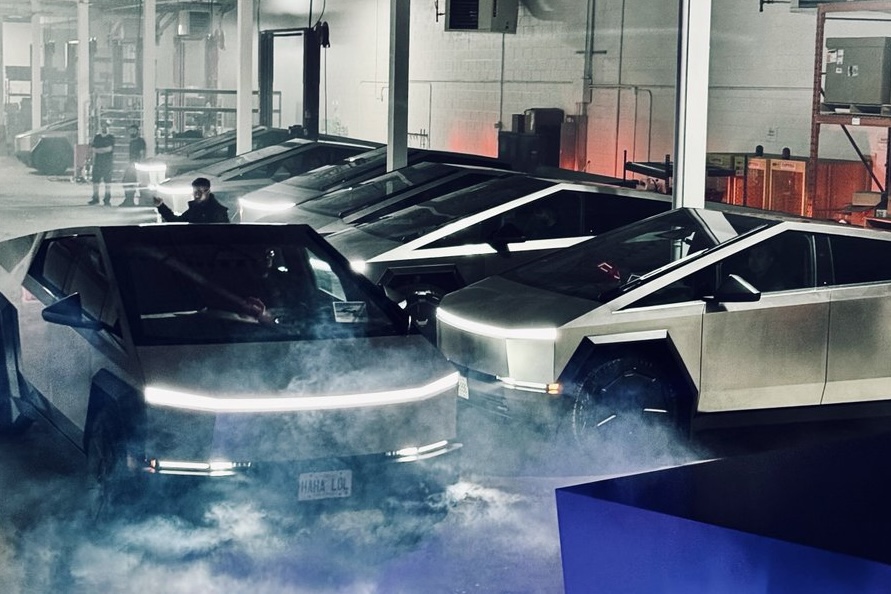
A study from insurance agency Guardian Service has suggested that a notable number of Tesla owners in the United States have experienced intentional damage to their vehicles.
Despite this, the majority of Tesla owners who participated in the study were still willing to recommend the company’s vehicles to their friends.
The Study
The insurance agency’s study was conducted in April 2025. As per Guardian Service, the study was aimed at determining how vandalism and targeted hostility, among other factors, are reshaping the EV ownership experience in the United States.
A total of 508 Tesla owners participated in the study. The generational breakdown of respondents was 28% Gen Z, 31% Milennials, and 31% Gen X and Baby Boomers combined.
Intentional Attacks
Reports of intentional damage were widespread among the study’s respondents, with 44% of the study’s participants stating that their vehicle had been keyed, slashed, or otherwise vandalized. Average repair costs for vehicles that experienced intentional damage were almost $1,900.
A total of 43% of the study’s respondents also stated that they had received rude gestures and negative comments from strangers while they were driving their Teslas. A total of 72% of the study’s respondents also believed that they were more likely to be targeted for vandalism compared to other drivers. This may be part of the reason why 66% also stated that they feel anxious leaving their Teslas unattended.
Still Recommended, But Some Are Second-Guessing
Despite their concerns about vandalism, the majority of Tesla owners still seem to be happy with their vehicles. While 19% of the study’s respondents stated that they regretted their Tesla purchase, and while 34% stated that they were considering selling or trading in their Tesla within the next year, 66% of the study’s respondents stated that they were still likely to recommend Tesla to a friend.
The Tesla owners who participated in the study seem more cautious than before, however, with 37% stating that they are now avoiding posting content about their Teslas on social media out of fear of backlash or judgment.
Guardian Service’s full findings of its study can be accessed here.
News
Mazda adopts Tesla’s North American Charging Standard (NACS) in Japan
Mazda’s decision to adopt Tesla’s standard is intended to provide more convenience to customers.
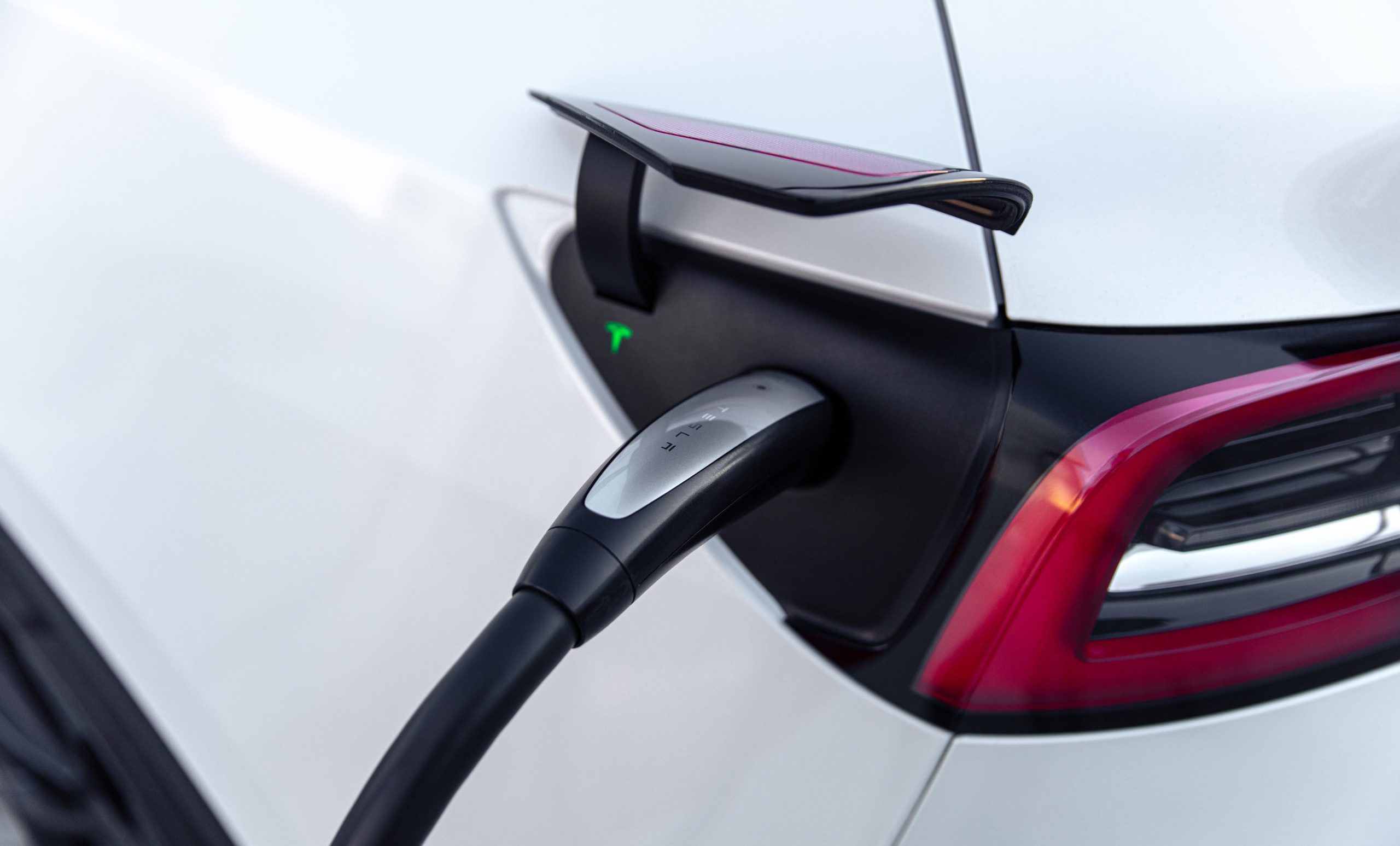
Japanese automaker Mazda Motor Corporation has announced that it has reached an agreement with American electric car maker Tesla to adopt the North American Charging Standard (NACS) for its EVs.
The update was shared by Mazda in a press release.
Mazda’s NACS Commitment
As per Mazda in its press release, NACS will be adopted for battery electric vehicles that will be launched in Japan from 2027 onward. This is quite interesting as Tesla’s NACS system will be used by Mazda within Japan. As per the automaker, its decision to adopt Tesla’s standard is intended to provide more convenience to customers.
“Mazda adopted NACS to provide customers with greater convenience by a broader range of charging options. This will provide Mazda BEV customers with access to Tesla Superchargers across Japan. Mazda BEVs will be compatible with other charging standards besides NACS with the use of adapters,” Mazda wrote in its press release.
Not the Only Japanese NACS Adopter
Interestingly enough, Mazda is not the first Japanese automaker to adopt NACS to take advantage of Tesla’s Supercharger Network in Japan. In September last year, Sony Honda Mobility announced that it was adopting NACS for its AFEELA electric vehicles. While AFEELA’s EVs are expected to be initially available in the United States in 2025, the vehicles will also be coming to Japan later on.
Mazda’s adoption of Tesla’s charging standard was praised by Tesla Director of Charging Max de Zegher, who noted that it is only a matter of time before NACS becomes the standard in Japan and other countries. NACS has so far been adopted widely by electric car makers in the United States.
“NACS becoming the standard in Japan (and South Korea) seems like only a matter of time now. It’s also great to see other fast-charging networks starting to install NACS in Japan. Tesla Charging is accelerating the transition to NACS, for the industry to get clarity faster. Vehicle manufacturers also don’t want to build market-specific variants— like CHAdeMO just for Japan or CCS1 just for South Korea,” the Tesla executive wrote in a post on X.
Elon Musk
Tesla proves once more that its factories are its best product
Tesla’s factories are the company’s biggest products–literally.
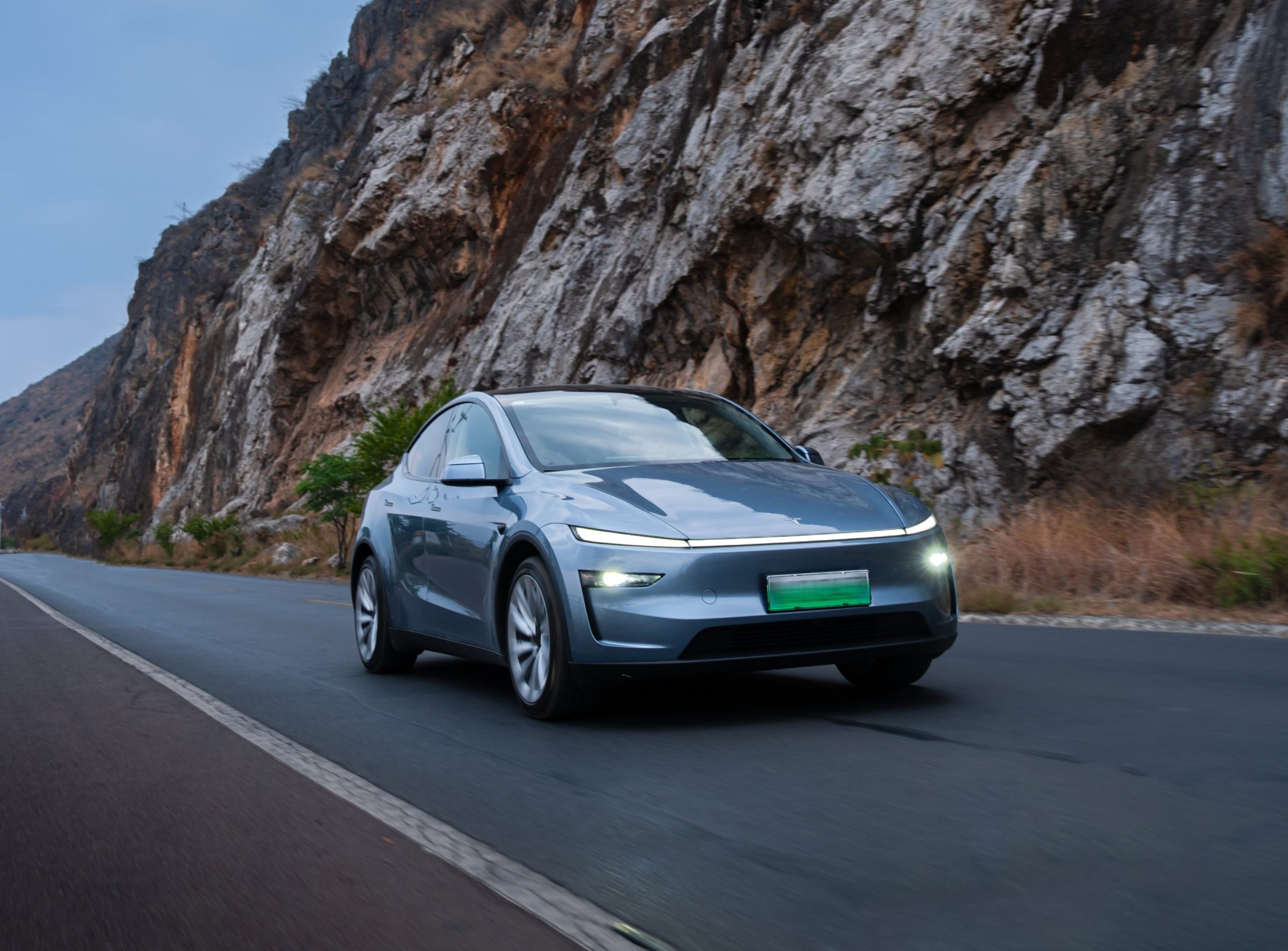
Tesla’s factories are not just the company’s biggest assets. They are also its best product. This is, at least, as per Tesla China’s recent post on social media platform Weibo.
Tesla China’s Weibo post was shared to celebrate Giga Shanghai’s changeover to the new Model Y, which is currently being delivered to consumers globally.
Tesla’s Best Product
In its post, Tesla China noted that Gigafactory Shanghai was able to complete its new Model Y production ramp up in just six weeks. This is a new record for Tesla, and it speaks to the company’s intense focus on efficiency. Tesla also highlighted the Cybercab’s production line in its Weibo post, stating that the upcoming vehicle will see “ultra-high levels of automation” when it gets produced.
“The factory is Tesla’s best product—Tesla Shanghai Super Factory completed the new Model Y production capacity ramp-up within 6 weeks, setting a record for the company’s fastest model production speed. In the future, the North American factory is expected to roll out a Tesla self-driving electric Cybercab every 5 seconds to subvert the vehicle production and manufacturing model. Adhering to the first principle of car manufacturing is Tesla’s core advantage that is difficult to copy,” Tesla China wrote in its post.
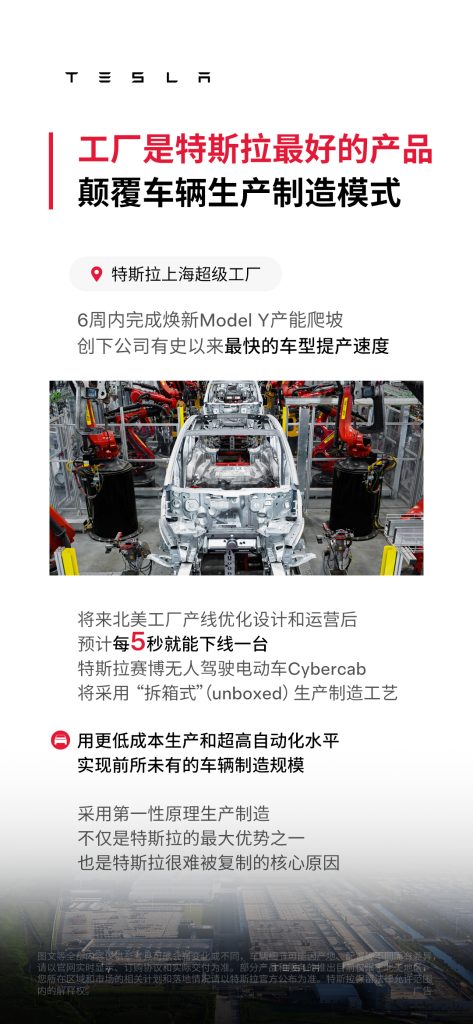
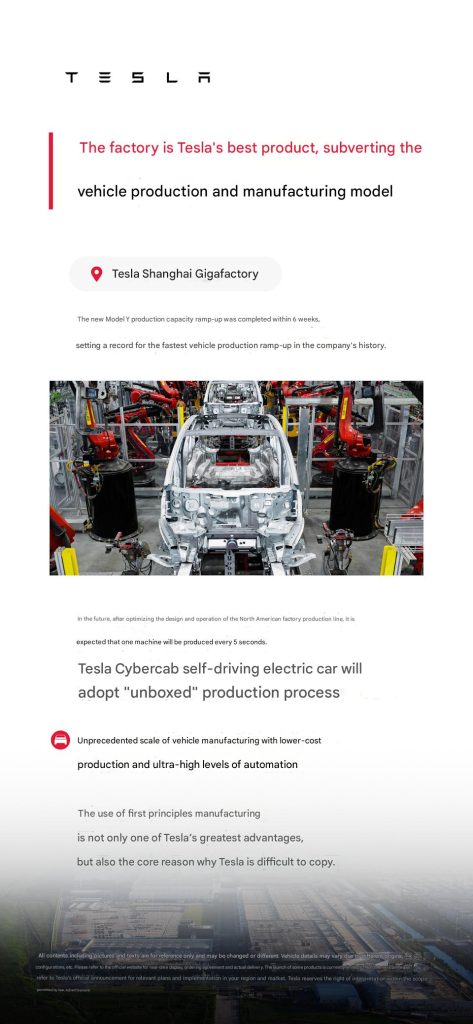
Tesla’s Factories
Tesla’s factories are among the best in the world. Tesla only operates four vehicle factories for its entire vehicle lineup today, which is quite impressive for a company that has so far sold up to 1.8 million vehicles per year. Tesla is expected to improve its factories’ output with its future vehicles as well, with Elon Musk stating during the company’s Q1 2025 All-Hands Meeting that the Cybercab’s factory will look more like a high-speed consumer electronics line than a car production line. These innovations, Musk noted, should allow Tesla to ramp the Cybercab’s production to 2 million units per year.
Musk highlighted the importance of Tesla’s factories in the first quarter earnings call as well. While discussing the Cybercab’s line, Musk noted that with Tesla, the factory is as much a product as its cars. “The factory is the product as much as the car is the product. So, this really is the first principles approach to manufacturing that will ultimately allow us, I think, to… achieve a cycle time, meaning a unit every five seconds or less, off a single line,” Musk stated.
News
Starlink to launch on United Airlines planes by May 15
Select United Airlines passengers will get free Starlink internet, with 200+ Mbps speeds. Early testers streamed MLB & live news with ease.
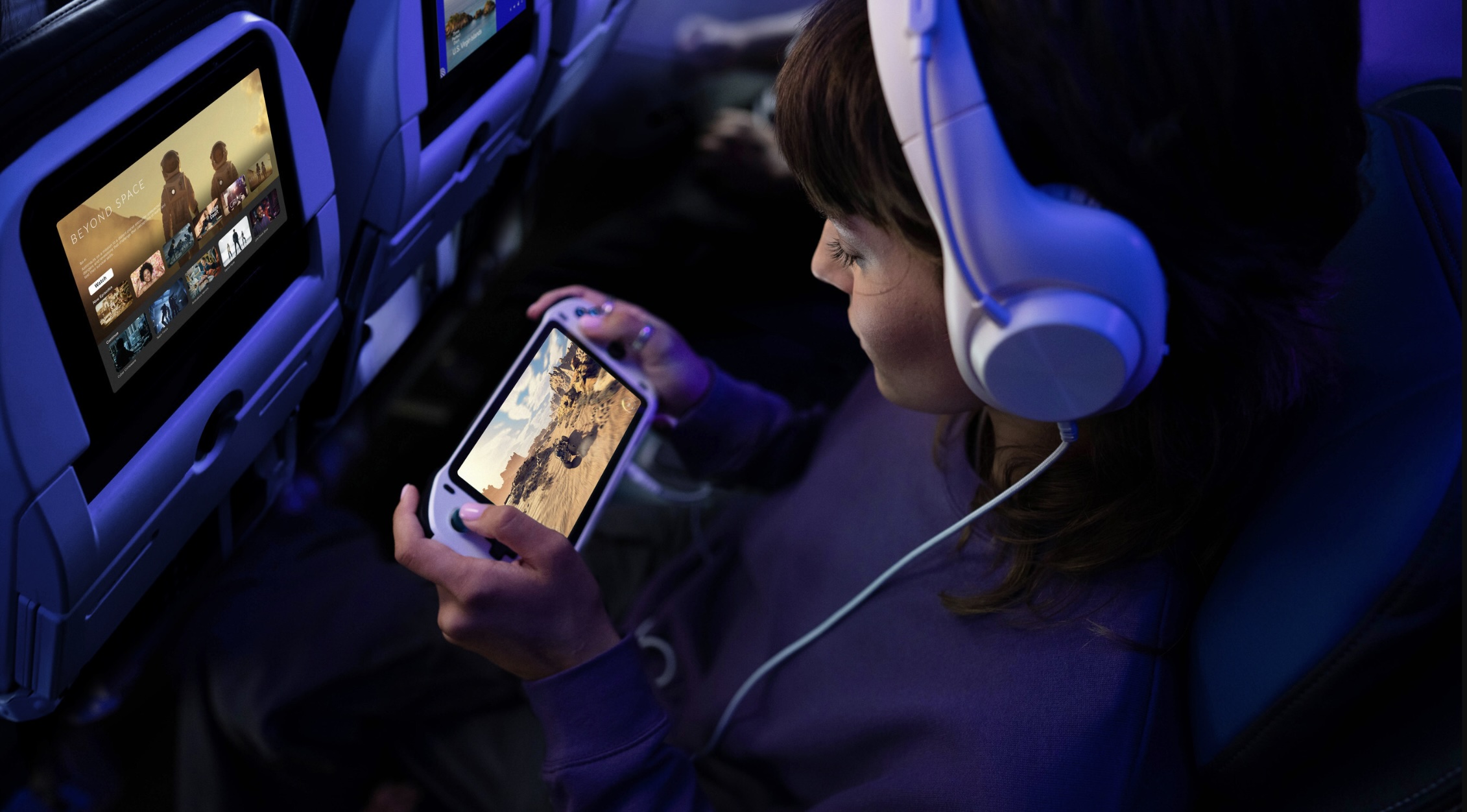
Starlink will launch on United Airlines planes by May 15, 2025, providing select passengers with free internet inflight.
Recently, Sean Cudahy from The Points Guy tried out United Airlines’ free Starlink Wi-Fi. The airline invited a few media to try out Starlink Aviation Wi-Fi before its official launch.
According to Cudahy, connecting to Starlink was easy. All he had to do was take out his phone and connect to the Unitedwifi.com network, which took him to a landing page. Once he clicked “get started” on the landing page, it opened the United mobile app on his phone.
The United app verified Cudahy’s status as a MileagePlus member. After that, all he had to do was click on “connect,” and he was all set. Starlink’s speed was reliable and just what passengers would need on a long flight.
“I ran a speed test, and it clocked the Wi-Fi at 217 Mbps of download speed, and 26.8 Mbps of upload speed,” noted Cudahy.
Cudahy added that connection to Starlink Wi-Fi on his other devices, like his tablet, was easier. All he had to do was scan a QR code on his phone from his tablet.
“United certainly isn’t exaggerating on the speed of the service: I was able to simultaneously watch a live news feed about the selection of a new Pope on one device, and stream a live Major League Baseball game on another,” The Points Guy noted in his review of Starlink Aviation.
United Airlines is offering Starlink services for free to MileagePlus members. Based on Cudahy’s experience, it’s best to download the United mobile app before your flight.
United Airlines expects to equip all 300 of its Embraer 175 planes with Starlink by the end of the year. It plans to install 40 regional jets with Starlink equipment every month.
Last month, the Federal Aviation Administration (FAA) approved United Airlines’ Starlink-equipped planes. United plans to roll out Starlink Wi-Fi across all its flights. It is currently working to receive FAA approval to install Starlink equipment on over 16 aircraft models.
-
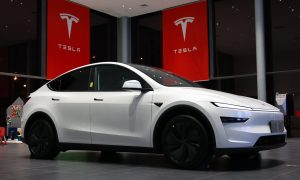
 News6 days ago
News6 days agoTesla offers legacy Model Y owners an interesting promotion
-

 News2 weeks ago
News2 weeks agoTesla is trying to make a statement with its Q2 delivery numbers
-
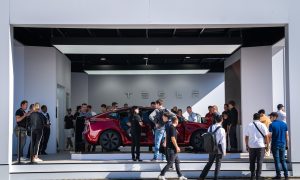
 News2 weeks ago
News2 weeks agoNY Democrats are taking aim at Tesla direct sales licenses in New York
-
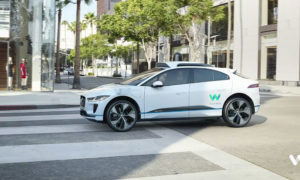
 News2 weeks ago
News2 weeks agoWaymo considers selling robotaxis to individual owners
-
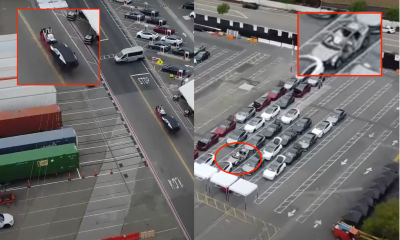
 Lifestyle2 weeks ago
Lifestyle2 weeks agoPossible first glimpse of Tesla “Model 2” affordable car in Fremont Factory
-
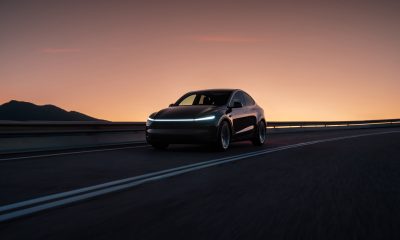
 News2 weeks ago
News2 weeks agoTesla robotaxi test details shared in recent report: 300 operators, safety tests, and more
-
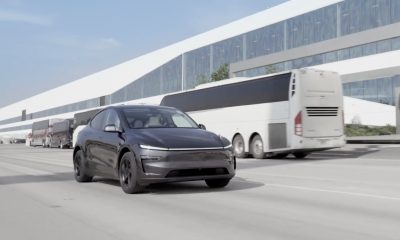
 News2 weeks ago
News2 weeks agoTesla FSD ruins other intelligent driving systems for NIO Superfan influencer
-
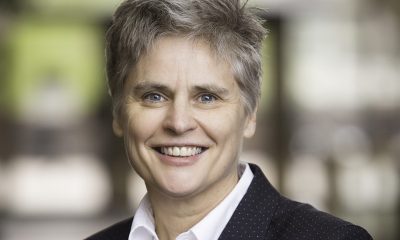
 News2 weeks ago
News2 weeks agoAtty who refused to charge six-time Tesla vandal sparks controversy

